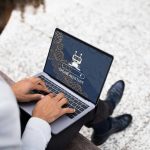In the world of competitive sports, and particularly in the adrenaline-packed arena of ice hockey, the margin for error is minuscule. With the constant evolution of technology, teams and players are always searching for that extra edge, that slight advantage that could be the difference between victory and defeat. In the NHL, an intriguing development is the increasing use of virtual reality (VR) training methods. These methods are not just for players; they’re proving especially beneficial for goalies. Let’s take a closer look at how VR is impacting the decision-making skills of ice hockey goalies.
The Science Behind the Sense
To understand the benefits of VR training, it’s important to comprehend how our senses play a crucial role in sports. When it comes to hockey, sight, touch, and spatial awareness are paramount. The speed of the game demands quick responses, often based on instinct rather than conscious thought.
A voir aussi : How Can Machine Learning Optimize Training Loads in Distance Runners?
In traditional training methods, these senses are honed through repetitive drills and real-game experiences. However, virtual reality provides an alternative and, in some ways, superior training platform. By simulating game situations in a controlled environment, VR allows players to practice their sense-based reactions without the physical toll of an actual game.
In particular, goalies benefit immensely from this approach. The goalie’s role is highly reliant on their ability to anticipate the play, based on visual cues from the game. By using VR, goalies can enhance their decision-making skills, gaining a better understanding of player movements and shot trajectories.
Avez-vous vu cela : How Can Virtual Reality Simulations Enhance Quarterback Decision-Making in American Football?
The Immersive Game Experience
Virtual reality provides an immersive experience that replicates the actual game environment in a way that traditional training methods cannot. With VR, goalies are placed right in the heart of the action, facing different scenarios that could occur in a real game. They get to experience situations from various angles, speeds, and perspectives, enabling them to ‘play’ hundreds of games in a short period.
This kind of exposure cannot be matched by conventional training methods, which are limited by time, weather conditions, and the availability of other players. By training in a virtual arena, goalies can expand their game understanding, improve their reaction times, and make smarter decisions under pressure.
The Integration of VR into Team Training Regimes
VR is not just a standalone tool; it is an integral part of comprehensive team training programs. Coaches and trainers can adjust the virtual scenarios to target specific weaknesses or work on particular skills. For instance, if a goalie struggles with shots from the left side, the VR program can be adjusted to focus on this area. This kind of personalized feedback enhances the overall efficiency of training.
Additionally, VR technology can provide in-depth analytics that can be invaluable for tracking progress and identifying areas for improvement. For example, it can measure reaction times, predict player movements, and analyze decision-making patterns. This level of detail is often not possible with traditional training methods.
The Future of VR in Ice Hockey Training
As in many other areas of life, technology is transforming how we approach sports training. VR is at the forefront of this change, providing a unique and effective way to train and improve skills.
The current trend suggests that VR will continue to be an essential tool in ice hockey training, especially for goalies. As the technology improves, the simulations will become even more realistic, giving players an ever-closest experience to the real game.
However, it is crucial to remember that VR is a tool and not the sole solution. Despite the many benefits, it cannot completely replace the value of physical training and real-game experience. Yet, it is an exciting addition to the training toolbox, one that will undoubtedly have a significant impact on the decision-making skills of goalies in the future.
As we continue to explore the potential of VR in sports training, we might just be witnessing a revolutionary episode in the history of ice hockey. It’s a fascinating time to be involved in the sport, and we eagerly look forward to what the future holds.
The Role of VR in Youth Hockey Development
Virtual reality is not only making waves in the NHL, but it’s also making a significant impact in youth hockey development. The ability to simulate game-like scenarios in a controlled environment is particularly beneficial for young players still learning the nuances of the game. With VR, kids play hockey in the immersive, virtual sense arena, replicating the intense atmosphere of real games without the physical pressures.
Within this virtual reality training, young goalies can learn to anticipate, react, and make decisions based on the virtual cues presented to them. Such training can significantly boost their confidence, thereby improving their performance in actual games. Rather than being thrown into the deep end, virtual reality allows them to gradually build up their skills and decision-making abilities.
Moreover, VR provides an enjoyable alternative to traditional training. Youth hockey players might view it as just another video game, but with the added benefit of enhancing their hockey sense and skills. By incorporating virtual reality into training plans, coaches can keep the training process engaging and exciting, thereby encouraging the kids to play hockey more passionately.
A Final Thought: VR as an Enhancer, Not a Replacement
The inroads virtual reality is making into ice hockey training and the NHL sense arena are undeniably substantial. Its potential to improve the decision-making skills of goalies, whether seasoned professionals or young learners, is impressive. Even as technology continues to advance, the importance of traditional, on-ice training shouldn’t be overlooked.
Surely, VR has its perks: it offers a safer environment for learning trial-and-error, and it provides a comprehensive platform for tracking progress and honing specific skills. Still, the feel of the ice under the skates, the thrill of an actual game, and the experience of playing with a live team cannot be replicated in the virtual world.
In essence, virtual reality should serve as a complementary tool in ice hockey training, enhancing and refining the skills developed on the real ice. It’s about integrating the new with the old, the technical with the physical, and the virtual with the real.
The future of ice hockey training lies in this balanced approach, where traditional methods meet innovative technologies. It’s a dynamic and exciting future, and we can’t wait to see how it unfolds.






